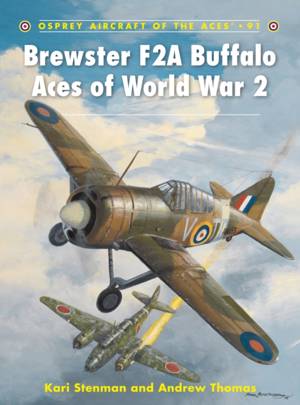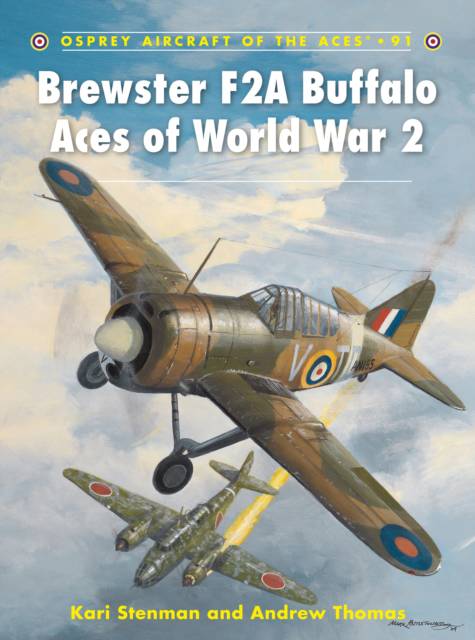
- Retrait gratuit dans votre magasin Club
- 7.000.000 titres dans notre catalogue
- Payer en toute sécurité
- Toujours un magasin près de chez vous
- Retrait gratuit dans votre magasin Club
- 7.000.0000 titres dans notre catalogue
- Payer en toute sécurité
- Toujours un magasin près de chez vous
Description
Entering service with the US Navy as a carrier-borne fighter, the Brewster F2A, later named Buffalo by the British and simply the Brewster by the Finns, saw relatively little service with its own nation. Indeed, it was to see action on just one occasion in US colors: the engagement off Midway by USMC F2As saw a number of Japanese carrier aircraft shot down, including two by future ace Col Charles M Kunz.
The F2A was also ordered for the RAF in 1939, and although it soon became apparent that the type was not suitable for use against the mighty Luftwaffe over Western Europe, the Buffalo was seen as a suitable type for use in the Far East. It was sent en-masse to equip new squadrons of the RAF, RAAF and RNZAF formed for the defence of Malaya and Singapore. Despite the many inadequacies exposed after the Japenese invasion, the Commonwealth units fought gallantly against the odds and with poor logistical backup and ultimately made many claims. Indeed no fewer than nine pilots either became aces on the type or increased their scores to achieve acedom, and a further fifteen aces flew them in action. Moreover, the leading Buffalo ace went on to become the most successful Commonwealth pilot against the Japanese of the entire war. It was in Finland, however, where the Brewster found undying fame and proved itself a real thorn in the side of the Soviets. Operating in primitive conditions and against superior numbers, Finnish Brewster 239 pilots racked up an incredible score against the Red Air Force. Overall, some 37 Finnish pilots became aces when flying the Brewster 239. The tubby Brewster was very much the fighter of choice for the leading Finnish pilots until the advent of large numbers of Messerschmitt Bf 109s in 1943.Spécifications
Parties prenantes
- Auteur(s) :
- Editeur:
Contenu
- Nombre de pages :
- 96
- Langue:
- Anglais
- Collection :
- Tome:
- n° 91
Caractéristiques
- EAN:
- 9781846034817
- Date de parution :
- 26-01-10
- Format:
- Livre broché
- Format numérique:
- Trade paperback (VS)
- Dimensions :
- 181 mm x 237 mm
- Poids :
- 299 g

Les avis
Nous publions uniquement les avis qui respectent les conditions requises. Consultez nos conditions pour les avis.






